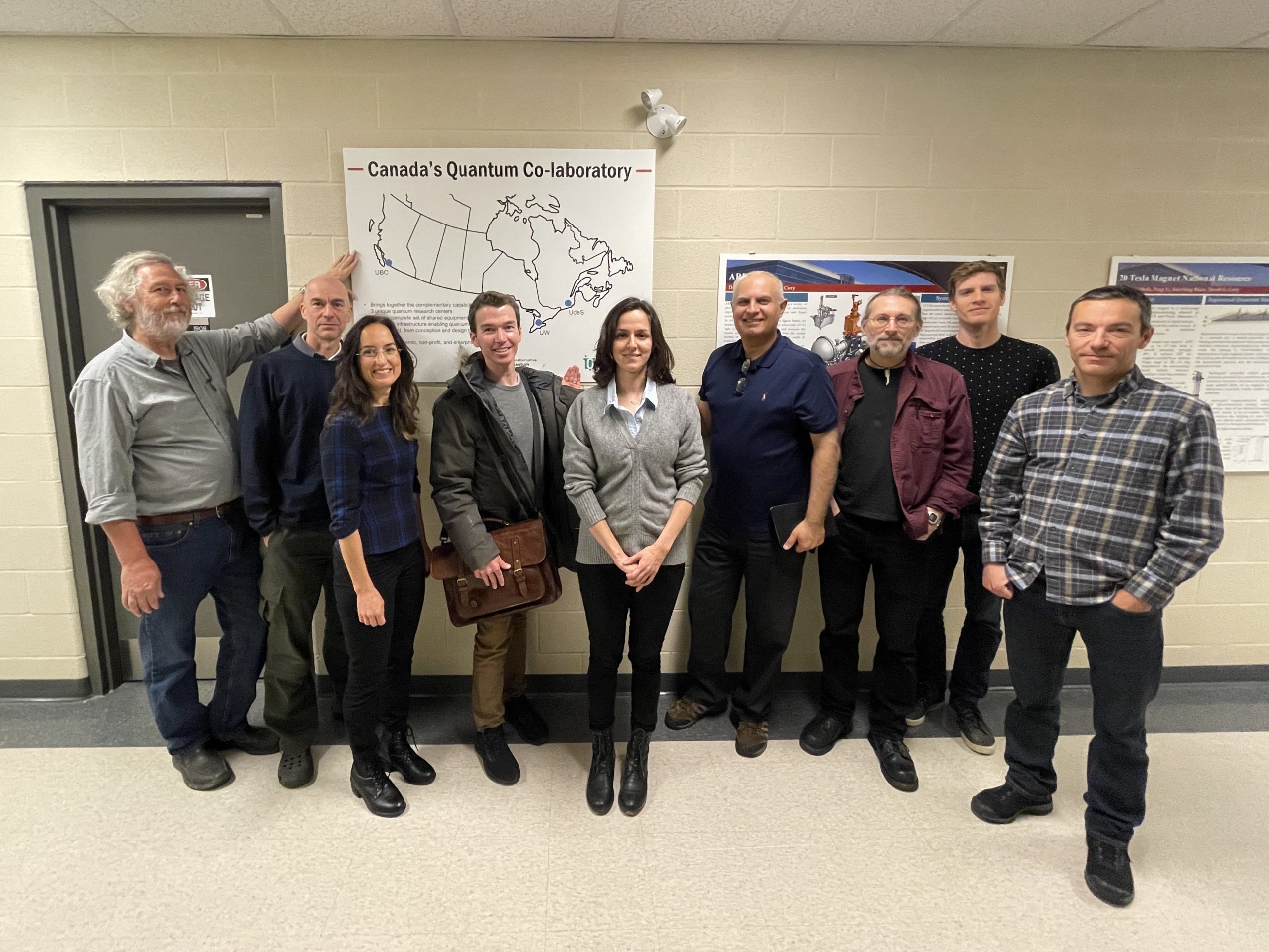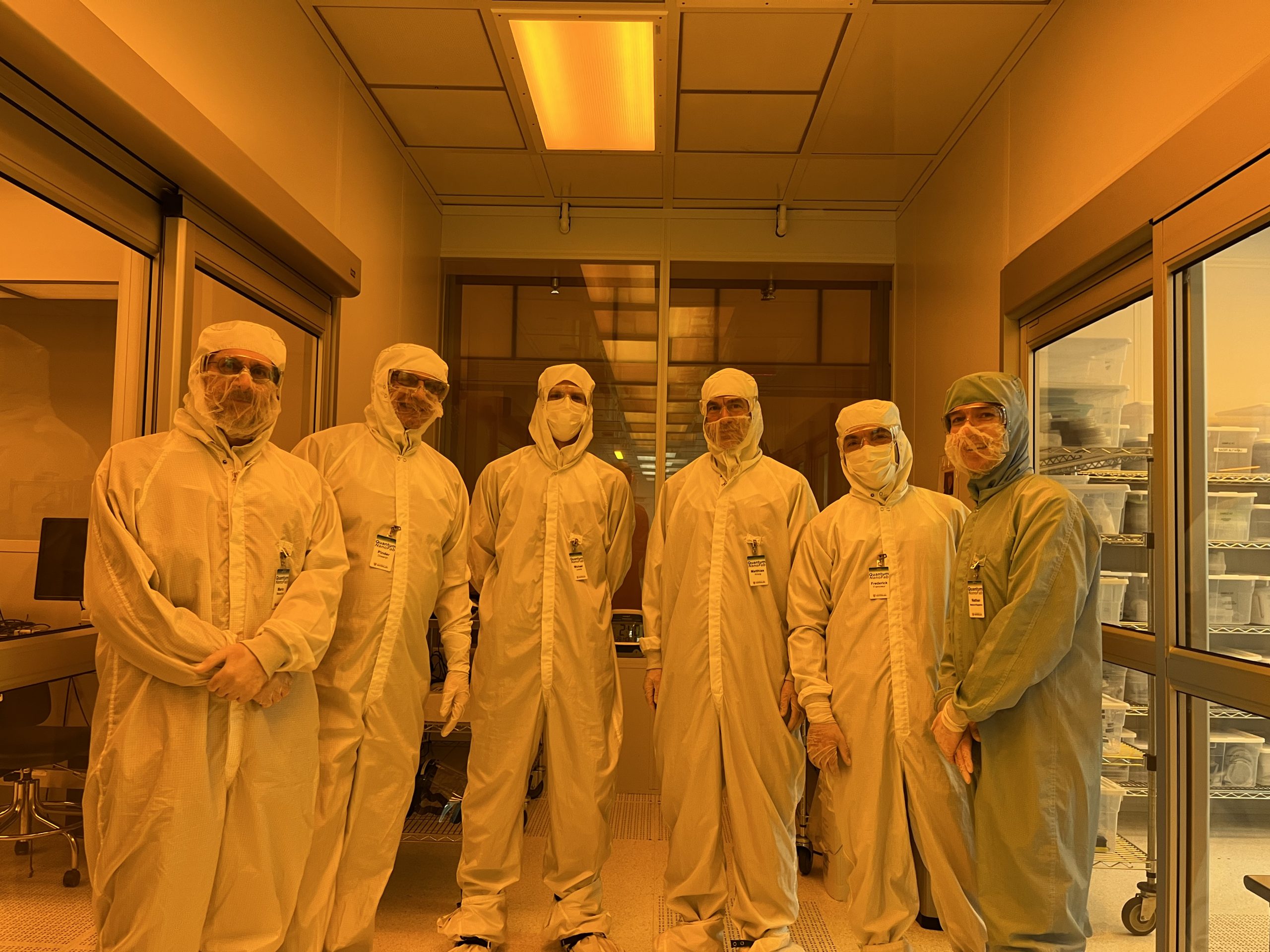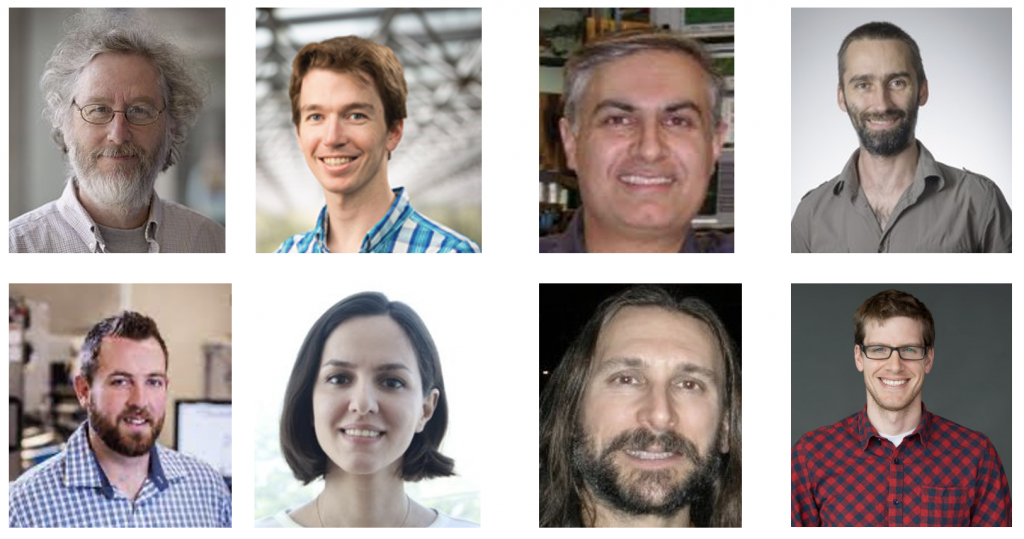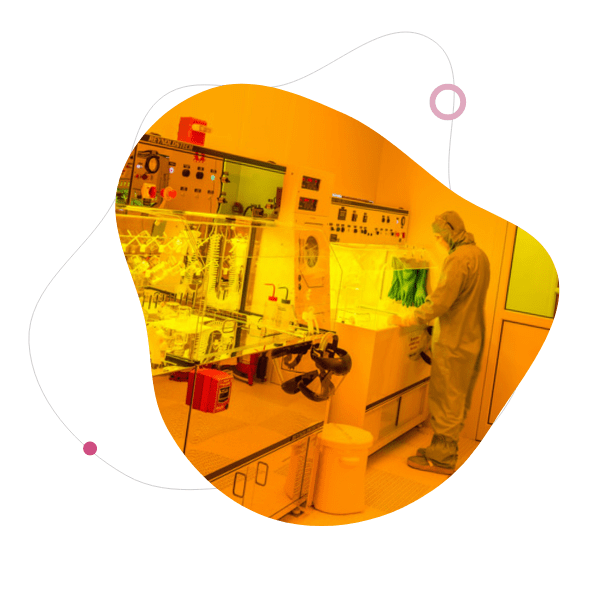Last month, members of the Quantum Colab’s lab operations committee and technical staff from the University of British Columbia (UBC) and University of Sherbrooke (UdeS) had the opportunity to visit the University of Waterloo (UW); UBC delegates also extended their visit to the UdeS.

The tools and expertise at the nodes are constantly evolving, and there have been significant updates to both recently. The theme of the visit was centred on staff enhancing their understanding of each other’s expertise and the available tools and processes in each node. “Even though we know what is available at each node on paper, the experience of exploring them in person and visiting the labs makes a huge difference,” says Saba Sadeghi, the UW staff representative on the lab operations committee. The visit demonstrated the power of connecting Quantum Colab technical staff members to enhance the user experience and impact
The visitors had the opportunity to visit the Research Advancement Center labs and Quantum-Nano Fabrication and Characterization Facility (QNFCF) at UW, as well as the Insitute Quantitique (IQ) building, including the mechanical workshop and the Quantum Fablab at UdeS. Michael Lacerte, the UdeS staff representative on the lab operations committee, was impressed by the capabilities at UW that users at Sherbrooke would benefit from: “The most exciting part of the visit to UW was learning about the film growth and deposition capabilities, the waterjet system, and the diamond turning system – users at Sherbrooke would greatly benefit knowing they have access to tools like that. Working with technical staff at the UW could also help expand our own cryogenic experience at Sherbrooke.”

Sadeghi also saw the benefit of leveraging resources and knowledge across nodes: “One topic that stood out to me was the strong expertise of UBC in Angle-Resolved Photoemission Spectroscopy (ARPES), which users at UW can benefit from immensely.” Matthias Kroug, a research engineer at SBQMI that joined the visit, noted that although many technologies and equipment are the same across the nodes, each setting and their applications offer new perspectives.
The open discussions between staff members also led to future ideas for collaboration and advancement of the Quantum Colab, with Kroug saying: “I enjoyed the one-on-one exchanges with the other staff members on topics I am interested in, like lithography and thin film growth. I can envision working with the individuals I met, sharing the results of tool performance tests or assisting each other in establishing processes in newly acquired equipment.” Through these discussions, it was realized that some of the processes within the nodes are already similar, which may ease the streamlining and standardization of other processes within the Quantum Colab.
Getting the staff across nodes together is an essential part of moving forward with the Quantum Colab – “the visit scratched the surface of what we could do together – more interactions between the nodes and getting users involved in discussions will undoubtedly expand potential opportunities between the nodes,” says Lacerte. Future visits are already being planned to connect people across the nodes further, and other opportunities to expand the impact of the Quantum Colaboratory include additional workshops and user meetings. “Establishing a framework that gives facility users information on what resources are available and how to access them will allow users to make effective use of resources at partnering labs,” says Kroug.
_____________________________________________________________________
About the Lab Operations Committee:
The lab operations committee aims to develop and implement processes that enable the Quantum Colab to run smoothly. More information on the priorities of the lab operations committee can be found in “Strengthening Canada’s Quantum Resource”.

The lab operations committee, from left to right: (top row) David Cory, Transformative Quantum Technologies (TQT) principal investigator; Nathan-Nelson Fitzpatrick, director of the Quantum-Nano Fabrication and Characterization Facility (QNFCF) director, Pinder Dosanjh, operations manager of the Stewart Blusson Quantum Matter Institute (SBQMI); and Mathieu Juan, Quantum Fablab facility director; (bottom row) Staff Representatives – Mike Miller, Industry representative; Saba Sadeghi, UW staff representative; Mario Beaudoin, UBC staff representative; and Michael Lacerte, UdeS staff representative.
